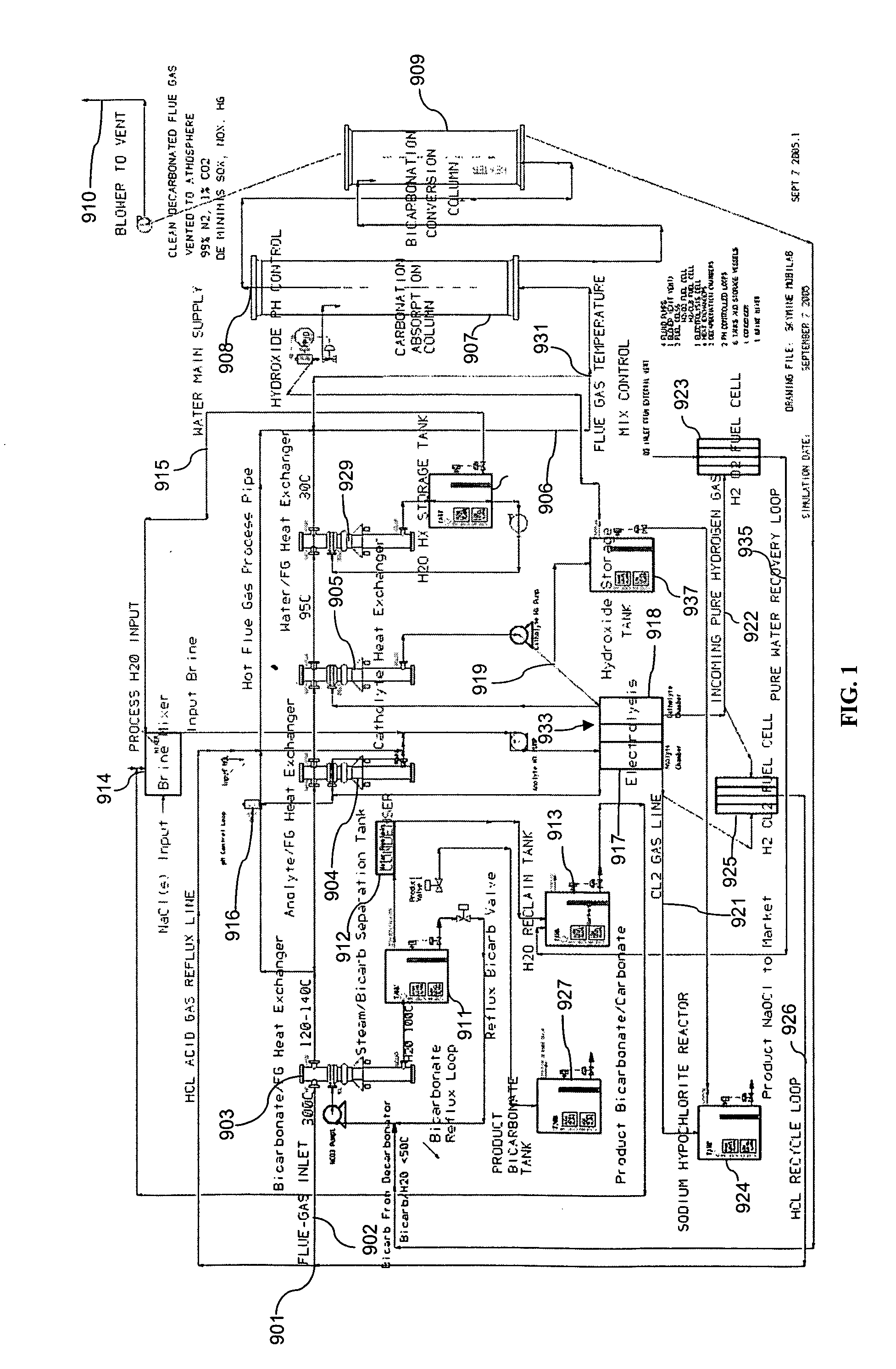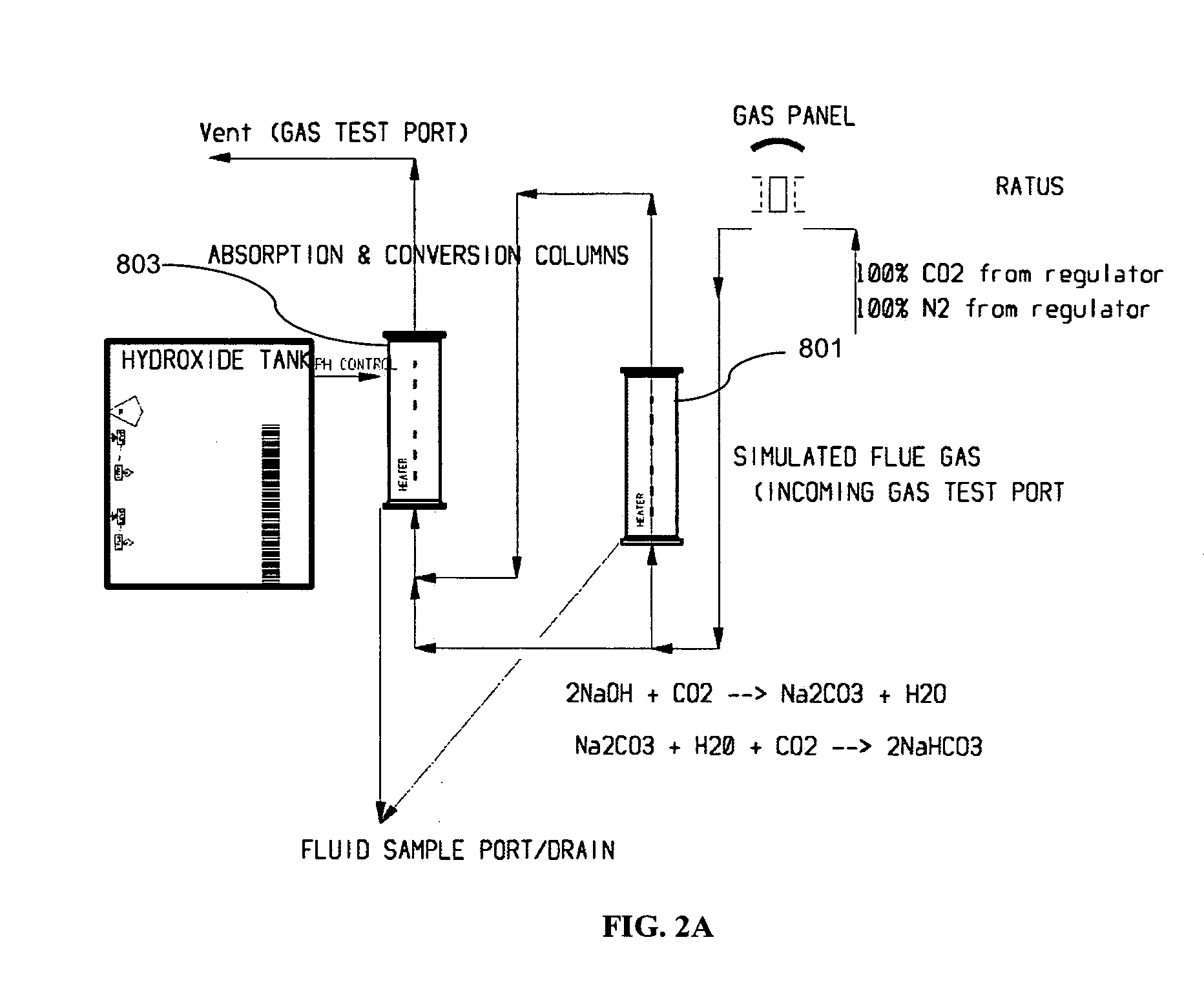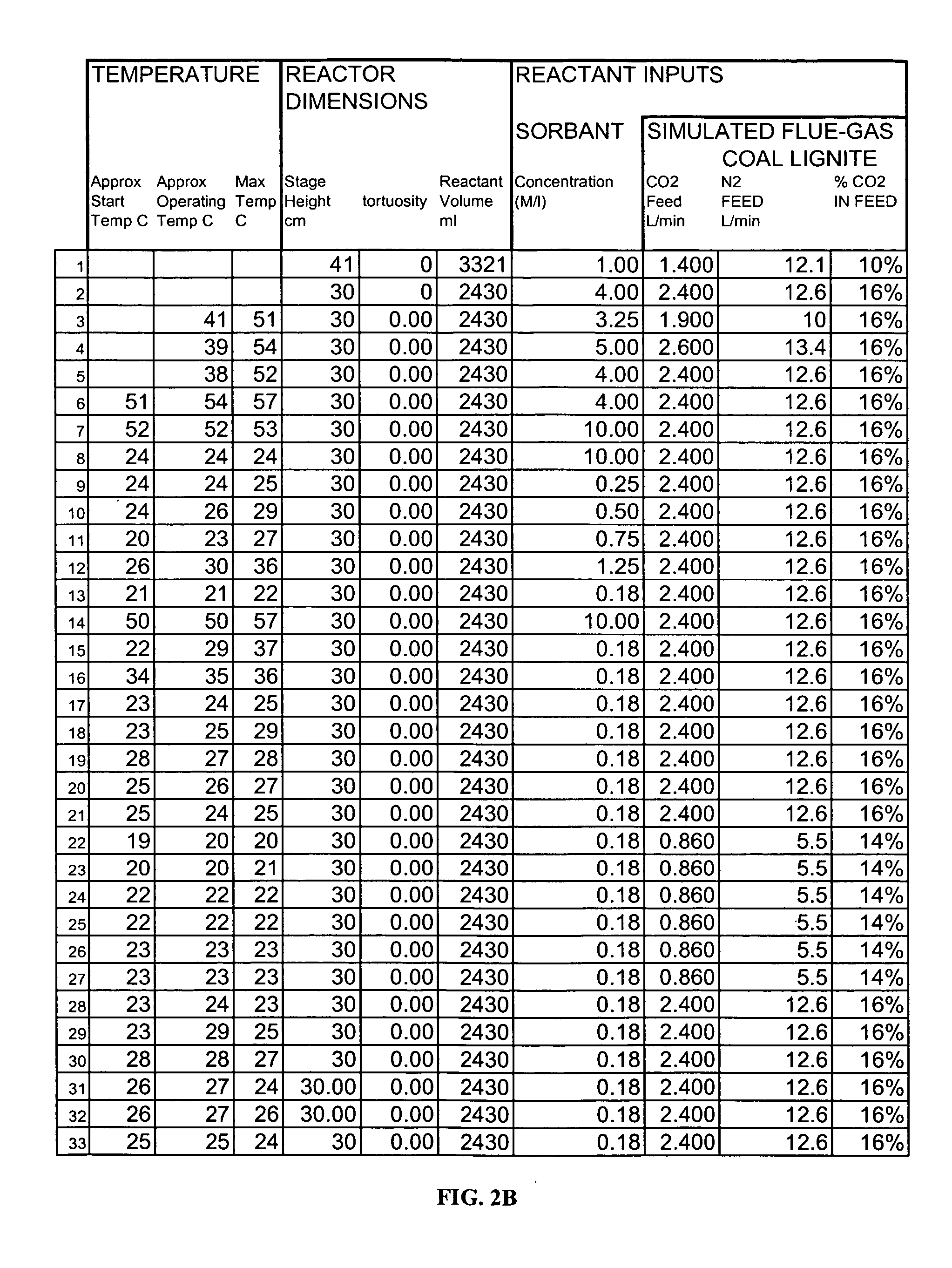Removing carbon dioxide from waste streams through co-generation of carbonate and/or bicarbonate minerals
a technology of carbon dioxide and waste stream, which is applied in the field of removing carbon dioxide, can solve the problems of large cost of sequestering techniques, less improvement to be extracted from this field of endeavor, and generally not economically feasible techniques, so as to improve the ecologic efficiency of the process, improve the electrical return, and improve the effect of environmental efficiencies
- Summary
- Abstract
- Description
- Claims
- Application Information
AI Technical Summary
Benefits of technology
Problems solved by technology
Method used
Image
Examples
example 1
CO2NaOH Bubble Column Reactor Design by Graphical Methods
[0157] In the bubble-column reactor designed for this example, there are four primary flow streams, namely: [0158] (1) Liquid flowing into the fluid of the bubble column at a given volumetric flow-rate (Vl=cubic volume of fluid per time); in the chosen case, the incoming volumetric flow-rate equals the outgoing volumetric flow rate. Hence, both are Vl). In this example, Vl=0.001 m3 / sec. [0159] (2) Vg0=the incoming volumetric flow rate of gas, which will be partially or wholly absorbed by the absorbent fluid. In this example, Vg0=0.05 m3 / sec. [0160] (3) Vg=the exiting volumetric flow-rate of gas. In this example, Vg=0.02 m3 / sec.
[0161] A bubble-column reactor was designed as bound by the above conditions. Sixty-percent incoming CO2 in a flue-gas was to be removed by bubbling through a solution of concentrated sodium hydroxide. The reaction is mass-transfer limited. The objective of the example was to calculate the reactor size...
example 2
CO2 / NaOH Bubble-Column Design by Mass-Transfer Coefficient Solution
[0167] The objective of this example was to determine the mass-transfer coefficient, kla (moles / sec / volume), from theoretical build-up. It was determined from this example that this correlative method can potentially lead to inconclusive results; i.e., this example highlights the difficulty in predicting actual results from theory due to the indeterminacy of measuring some of the critical parameters. Therefore, only experimental scaling can conclusively determine the result of a large decarbonation unit.
[0168] The following equations for gas-hold-up (εg) and mole-transfer (kLa) are from correlations from Akita and Yoshida (1973), and are valid for carbon dioxide and water systems at relatively large column heights and diameters (i.e., >0.1 m):
Gas-Hold-Up ɛ g(1-ɛ g)4=C*[g*Dc 2*ρ L / σ]1 / 8*[g*Dc 2 / vl 2]1 / 12*[μ g / g*Dc]
and
Mass-Transfer Coefficient
kLa(1 / sec)=[Cco2*Dco2−h20 / Dc2]*[νL / Dco2−h20]0.2*[g*...
example 3
CO2NaOH Bubble-Column Design (Depth) from Experimental Data
[0188] Note that the reliance of certain embodiments of the present invention upon the “short stage efficiency theory” described herein (3 m or less gas-liquid contact distance, or fluid stage height, to achieve >90% absorption) is confirmed by two different calculation techniques that are consistent with practiced chemical engineering design. However, in certain cases (as noted above) certain simplifying assumptions have been made in these design calculations, so experimental verification was indicated and performed with the Results displayed in FIGS. 2B and 2C (explained in further detail below).
[0189] Each of these processing runs obtained a certain CO2 absorption over a certain gas-liquid contact distance (namely the height of the fluid in unpacked, open bubble-column cases); e.g., 20% absorption through 30 cm of fluid.
[0190] If the gas were then passed through a second column of the same design and state-of-condition...
PUM
| Property | Measurement | Unit |
|---|---|---|
| Volume | aaaaa | aaaaa |
| Volume | aaaaa | aaaaa |
| Volume | aaaaa | aaaaa |
Abstract
Description
Claims
Application Information
 Login to View More
Login to View More - R&D
- Intellectual Property
- Life Sciences
- Materials
- Tech Scout
- Unparalleled Data Quality
- Higher Quality Content
- 60% Fewer Hallucinations
Browse by: Latest US Patents, China's latest patents, Technical Efficacy Thesaurus, Application Domain, Technology Topic, Popular Technical Reports.
© 2025 PatSnap. All rights reserved.Legal|Privacy policy|Modern Slavery Act Transparency Statement|Sitemap|About US| Contact US: help@patsnap.com



